The other day with about a half an hour to kill while waiting to work with a fantastic volunteer at Pocahontas State Park, on an overcast day I decided to head outside and explore the park.
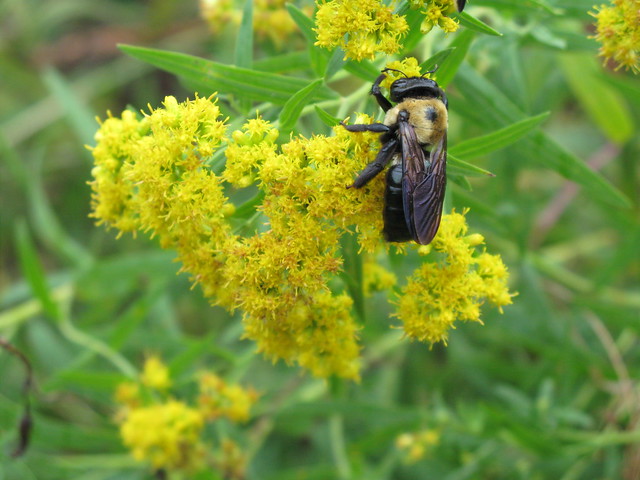
More than 1,800 species of plants and animals have been documented from the park, and for each species there are many, many individuals.
As I had already spent way too many hours in my office, I decided to go outside and take some pictures. Now you have to know that Pocahontas State Park is the biggest state park in Virginia, with close to 8,000 acres (almost 12.5 square miles). So imagine the enormous numbers of trees, flowers, blueberry bushes, salamanders, woodpeckers, and squirrels that live in this park. And that is only naming a few of its inhabitants. More than 1,800 species of plants and animals have been documented from the park, and for each species there are many, many individuals. Now to make your head buzz even more, just think how every plant and animal interacts with many other plants and animals.
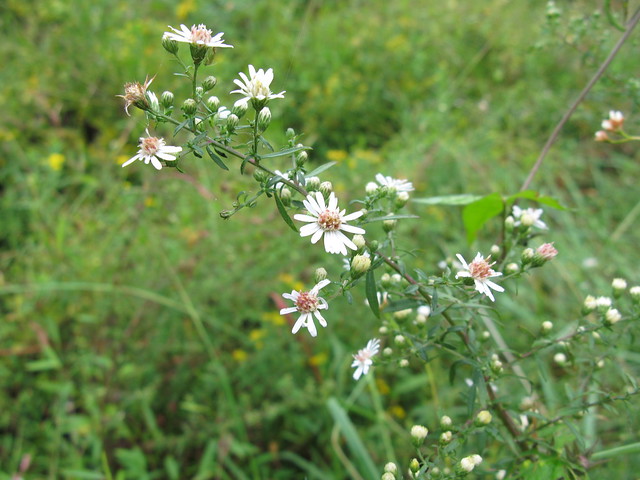
An enormous number of trees, flowers, blueberry bushes, salamanders, woodpeckers, and squirrels live in this park, just to name a few.
For instance during my little outing I found a bumblebee loving the nectar that the flower of the goldenrod provided. As it flies from one goldenrod flower to the next, it takes pollen along with it, and makes sure that the goldenrods produce seeds – promising more goldenrod flowers for bumblebees to feed on in the future. The bumblebee may stay on the goldenrod flowers all day, but will make trips to other flowers as well, such as asters.
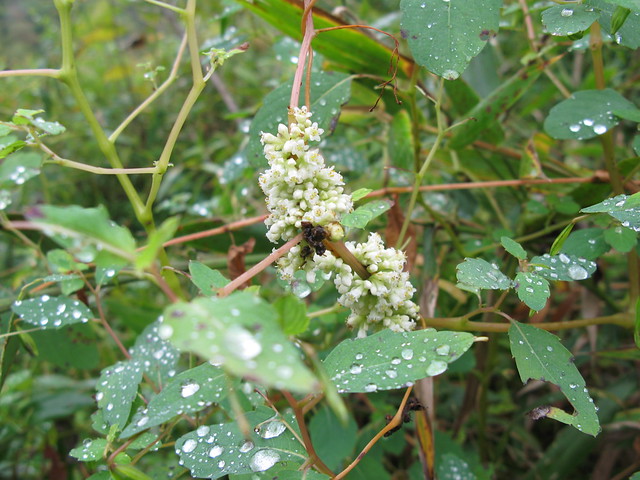
Strange plants can be found in the park like this common dobber which can parasitize another plant.The white flowers belong to the dodder. The dodder flower is attached to a thin, orange, vining stem. The leaves belong to its victim, a jewelweed.
Another rather strange example is how a plant can parasitize another plant. Yup, you read that correctly. There is a pretty strange plant called a dodder, which is not green, and only has very tiny leaves (the one I saw had orange stems and white flowers). he green color in “regular plants” is caused by the presence of chlorophyll, which also happens to be essential for creating food (sugar) out of water and carbon dioxide. So the dodder not having this green stuff has to get its food elsewhere. Solution: as it is twining and twining around another plant it inserts a sort of root tip into the other plant to suck up the goodies. Once that connection has been established, the root of the dodder shrivels up, and the dodder is no longer attached to the ground. Although dodders are usually not lethal to their hosts, they tend to make their hosts more susceptible to attack by insects and disease.
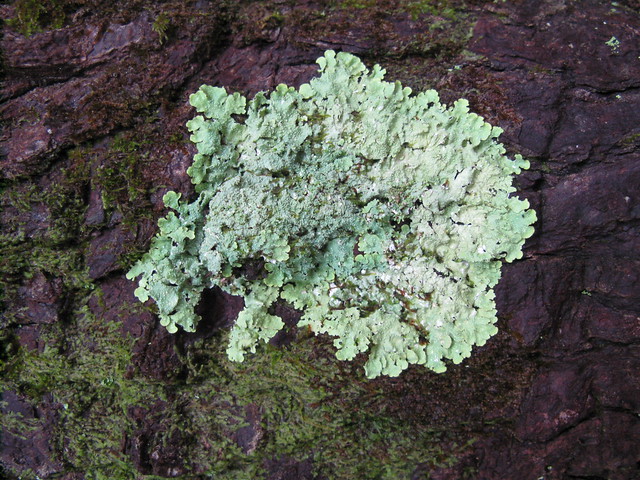
Lichens are a cooperative effort between an alga and a fungus.
Now a much more benign relationship exists between trees and the lichens growing on them. Or actually, the story starts with the lichen itself. A lichen, you see, is not just some sort of plant or moss, it is actually a cooperative effort between an alga and a fungus! In this relationship, the alga creates the nutrients (it’s green and makes sugar) and the fungus provides moisture, and an anchor. Although this relationship is not always evenly balanced, it is not quite the strangling affair of the dodder and its host plant! And the trees? Lichens only use trees as something to hold on to. They do not use them as a food source, nor strangle them. They are just giving them some decoration!
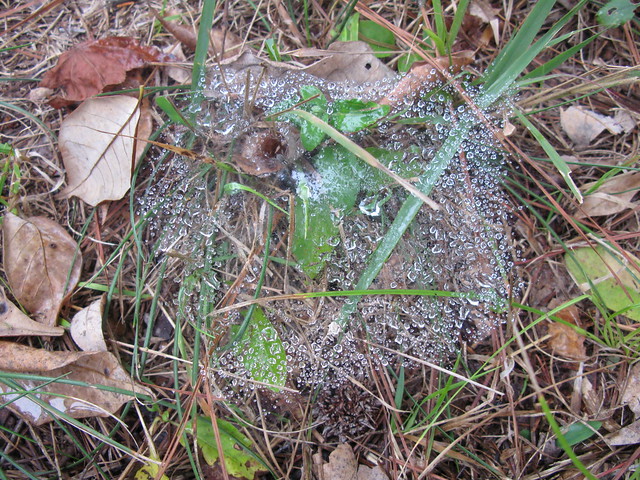
So you see, with all those plants and animals, and all these relationships between them, Pocahontas State Park is a complicated, fascinating web of life.
I saw all the things I just described in 30 minutes at Pocahontas. Can you imagine the marvelous things YOU can see at Pocahontas State Park?Just come visit, I’m sure you’ll make your own cool discoveries. Just imagine what an hour could do.
Come out soon and see our fall colors!
Pocahontas State Park is located In Chesterfield County, about 20 miles from Richmond. It's easily accessible from Interstate 95, Route 288 and Route 360.Its address is 10301 State Park Road, Chesterfield, VA 23832-6355. For more information, call the park office at 804-796-4255 or by email.
Drive Time: Northern Virginia, two hours; Richmond, half an hour; Tidewater/Norfolk/Virginia Beach, two hours; Roanoke, three hours.
